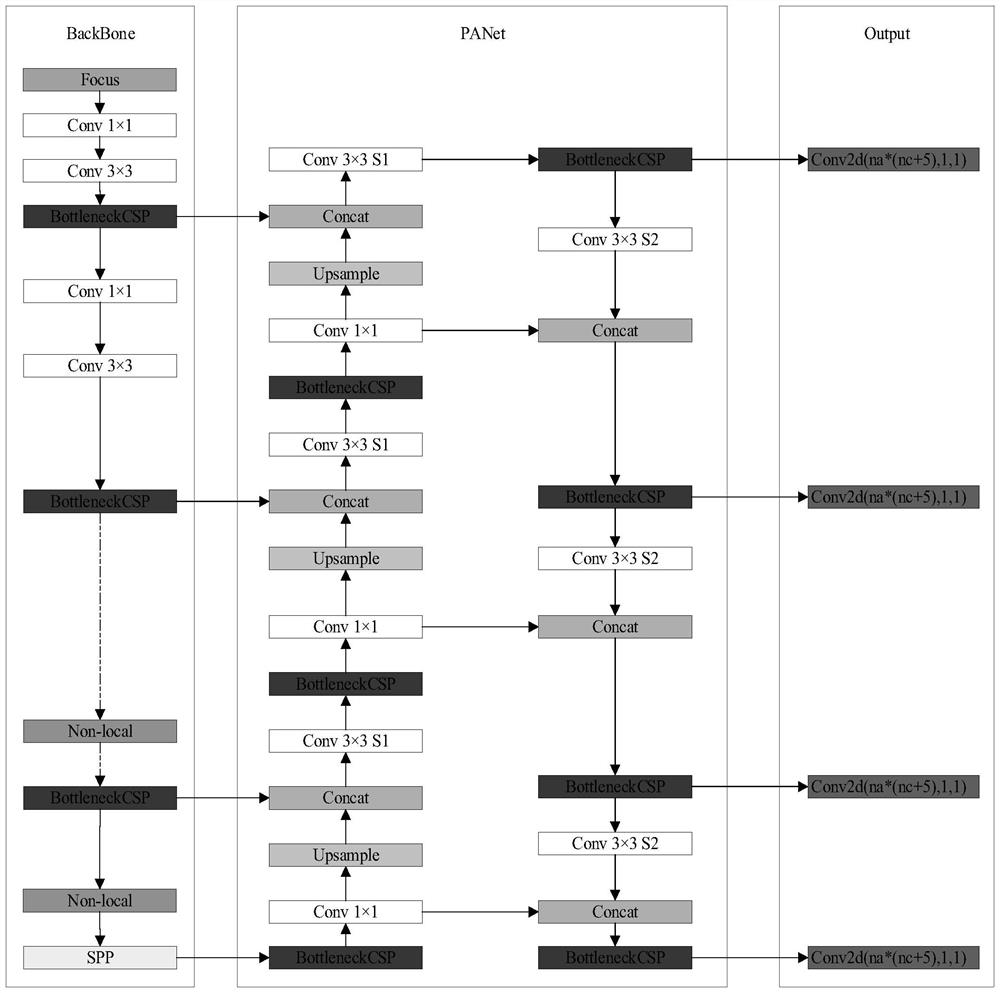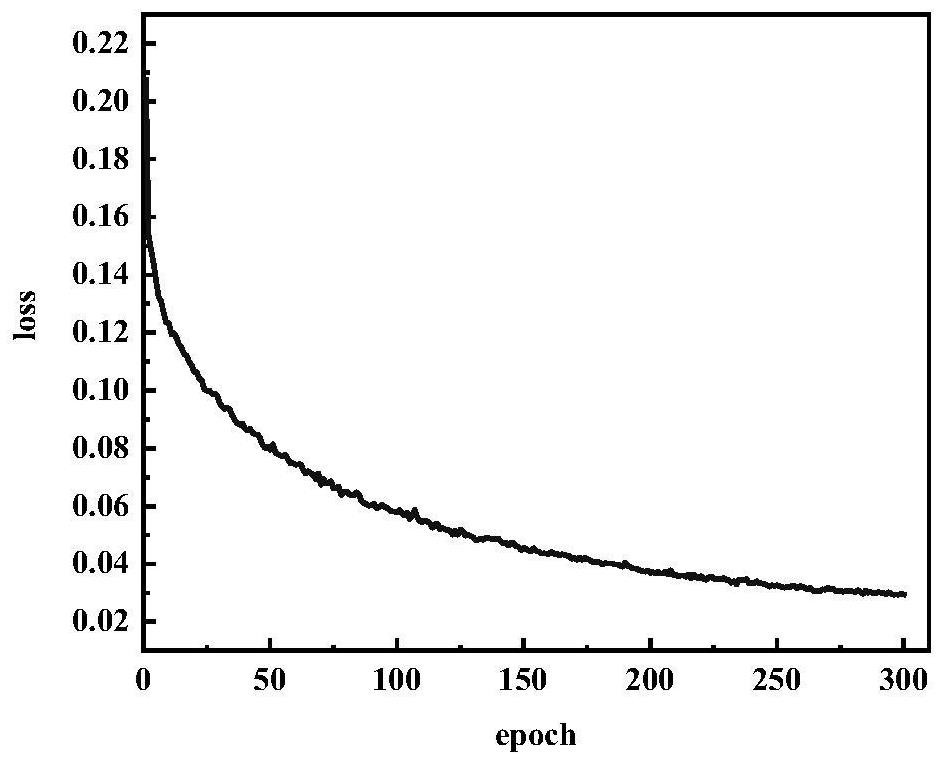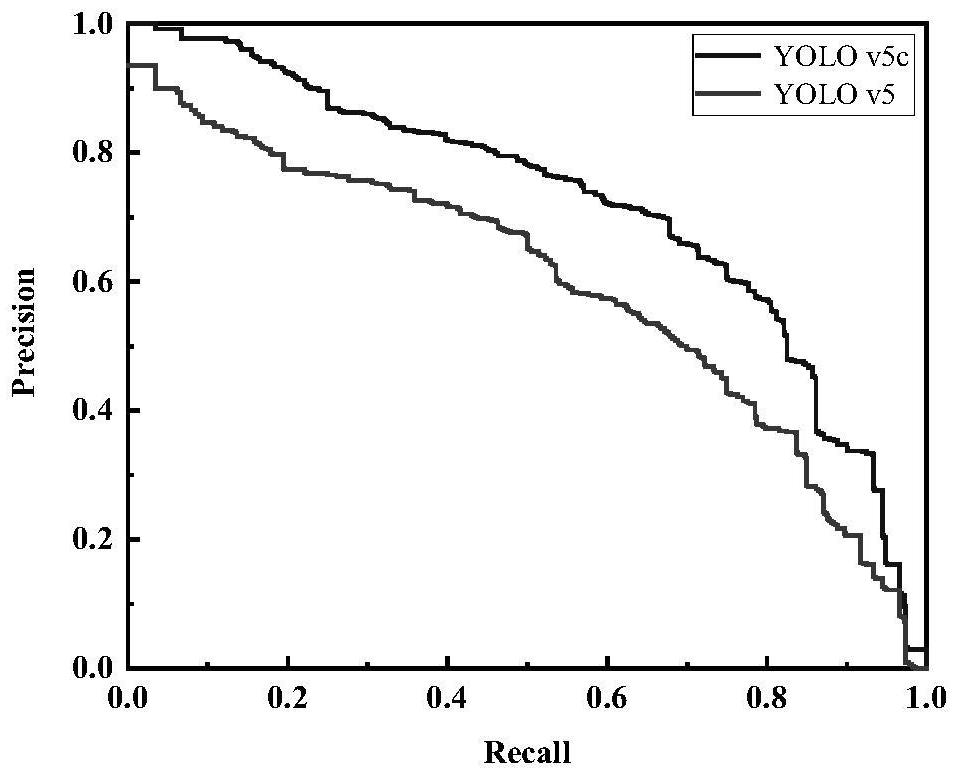YOLO v5-based attached marine organism type identification method
A recognition method and marine biology technology, applied in neural learning methods, character and pattern recognition, biological neural network models, etc., can solve the problems of missed detection and low recognition accuracy, achieve good detection results, improve detection performance, reduce The effect of missed detection risk
- Summary
- Abstract
- Description
- Claims
- Application Information
AI Technical Summary
Problems solved by technology
Method used
Image
Examples
Embodiment
[0029] A method for identifying species of attached sea organisms based on YOLO v5, comprising the following steps:
[0030] S1. Collect pictures of marine biological attachments to construct a data set, divide the constructed data set into a training set, a test set and a verification set, specifically, collect pictures of marine biological attachments, and convert the obtained image format into .jpg format, Use the labelImg software to label the types of pictures, and the output format is .xml file, which is made into a standard VOC dataset format, and then the constructed dataset is randomly divided into training set, test set and verification set at a ratio of 8:1:1. And mark the independent name tags of each marine organism to complete the construction of the marine attached organisms data set.
[0031] Specifically, in the process of data construction, you can also use the program to crawl pictures on the Internet and various public datasets, and then use the dataset exp...
experiment example
[0048] In this experiment example, pictures of four kinds of attached marine organisms, spiral branch worms, sea moons, barnacles, and mussels were collected, and the acquired data set pictures were flipped, image enhanced, etc., and the format of the obtained pictures was converted to .jpg format, and use the labelImg software to label the types of pictures, the output format is .xml file, and make a standard VOC data set format, and the constructed data set is randomly divided into training set, test set and verification at a ratio of 8:1:1 set.
[0049] Use the k-means clustering algorithm for clustering to obtain 12 target Anchor values, and modify the original Anchor box to the new Anchor box after clustering, which are Anchor boxes: [281, 448], [303, 294], [ 512, 528], [139, 232], [200, 333], [228, 187], [83, 123], [96, 189], [131, 141], [40, 58], [51, 98], [78, 74].
[0050] The improved YOLO v5 algorithm is trained under the pytorch framework, and the input image for...
PUM
 Login to View More
Login to View More Abstract
Description
Claims
Application Information
 Login to View More
Login to View More - R&D
- Intellectual Property
- Life Sciences
- Materials
- Tech Scout
- Unparalleled Data Quality
- Higher Quality Content
- 60% Fewer Hallucinations
Browse by: Latest US Patents, China's latest patents, Technical Efficacy Thesaurus, Application Domain, Technology Topic, Popular Technical Reports.
© 2025 PatSnap. All rights reserved.Legal|Privacy policy|Modern Slavery Act Transparency Statement|Sitemap|About US| Contact US: help@patsnap.com



